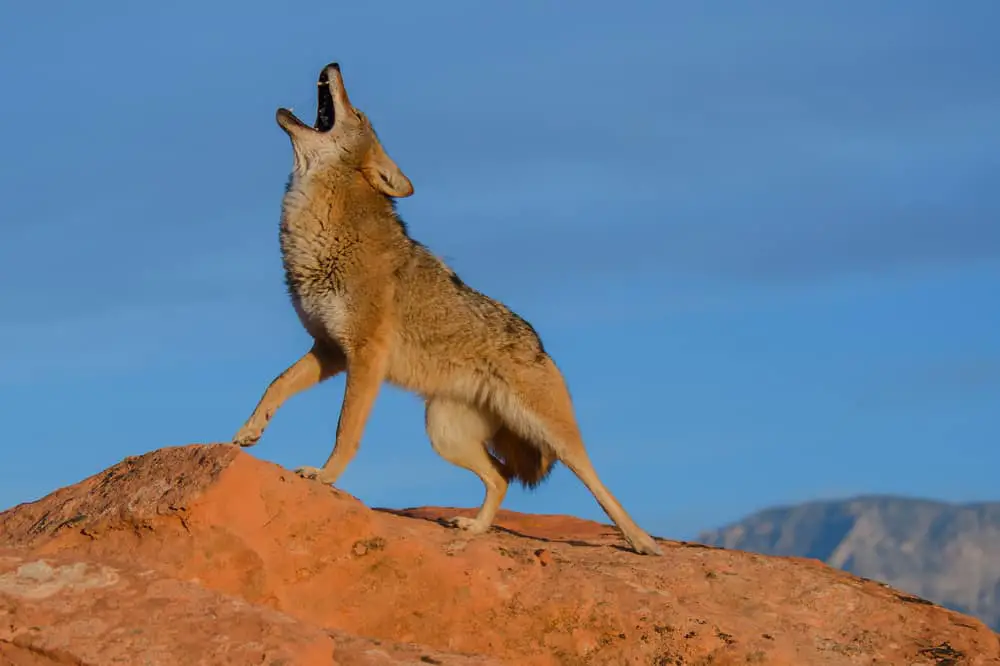
Coyotes are a tenacious animal found in every U.S. State aside from Hawaii. Adapted to urban living, coyotes have spread throughout Central America. The only thing holding them back from South America is the Darién Gap. So what types of coyotes are there?
Coyotes have 19 subspecies, with twelve in North America and seven in Central America. The largest coyotes live in the Southeastern part of the United States. There does appear to be a difference between urban and country coyotes too. Coydogs are rare; part coyote and part domesticated dog.
Coyotes appear to be here to stay. They are omnivores and not picky about their food. They also don’t fall prey to a lot of diseases.
So while 400,000 coyotes are killed every year, it’s counterproductive, as coyotes react by maturing faster and producing larger litters. Which type of coyote you are likely to encounter depends on where you live.
Table of Contents
- What Are The 19 Subspecies Of Coyotes?
- 4 Central United States Coyotes
- 2 Eastern Coyotes
- 6 Western Coyotes
- 7 Central American Coyotes
- Will Coyotes Eat My Pet?
- Do Coyotes Hurt People?
- Do Coyotes Have Predators?
- Do People Hunt Coyotes?
- What Good Are Coyotes?
- 15 Coyote Fun Facts
What Are The 19 Subspecies Of Coyotes?
The Integrated Taxonomic Information System lists the 19 subspecies of coyotes as:
- Canis latrans cagottis (Mexican)
- Canis latrans clepticus (San Pedro Martir)
- Canis latrans dickeyi (Salvador)
- Canis latrans frustror (Southeastern)
- Canis latrans goldmani (Belize)
- Canis latrans hondurensis (Honduras)
- Canis latrans impavidus (Durango)
- Canis latrans incolatus (Northern)
- Canis latrans jamesi (Tiburón Island)
- Canis latrans latrans (Plains )
- Canis latrans lestes (Mountain)
- Canis latrans mearnsi (Mearns’)
- Canis latrans microdon (Lower Rio Grande)
- Canis latrans ochropus (California Valley)
- Canis latrans peninsulae (Peninsula)
- Canis latrans texensis (Texas Plains)
- Canis latrans thamnos (Northeastern)
- Canis latrans umpquensis (Northwest Coast)
- Canis latrans vigilis (Colima)
While coyotes do adapt and are undeniably spreading, they are pretty set in their ways on two matters: territory and mates. Coyotes are fairly monogamous, generally sticking with a particular mate for a few years. When it comes to territory, they are similarly loyal.
Thus, while coyotes are spreading, it is an expansion of territory through the packs, rather than random wandering. This territorial behavior also means that the subspecies of coyotes don’t mix much. This means the nineteen subspecies are pretty distinct and are rarely found outside their region.
4 Central United States Coyotes
The term Central United States coyotes is a misnomer, as some of them live as far north as Canada and live as far south as Mexico. However, the four subspecies in this group are Lower Rio Grande, Mearns’, Plains, and Texas Plains.
Lower Rio Grande Coyote
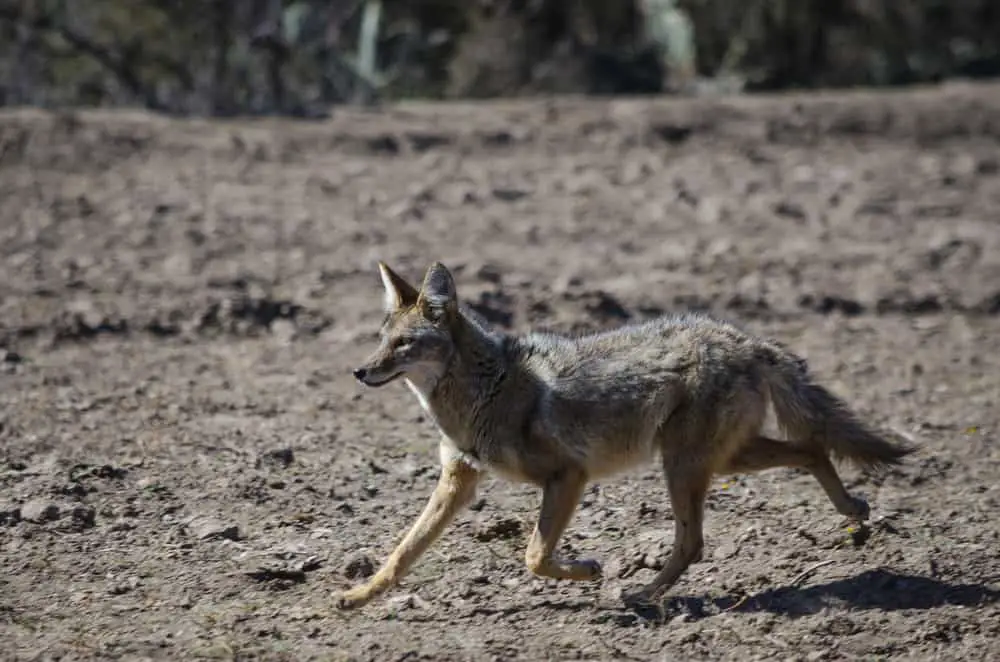
The Lower Rio Grande Coyote is found in northern Tamaulipas, Mexico, and southern Texas and is the smallest of the subspecies. They are generally gray-yellow.
Mearns’ Coyote
The Mearns’ coyotes are brightly colored and on the smaller end of the species. It hangs out in Sonora and Chihuahua, Mexico. In the U.S., it can be spotted in southeastern California, northeastern Baja California, New Mexico, Sothern Utah, and southwestern Colorado.
Plains Coyote
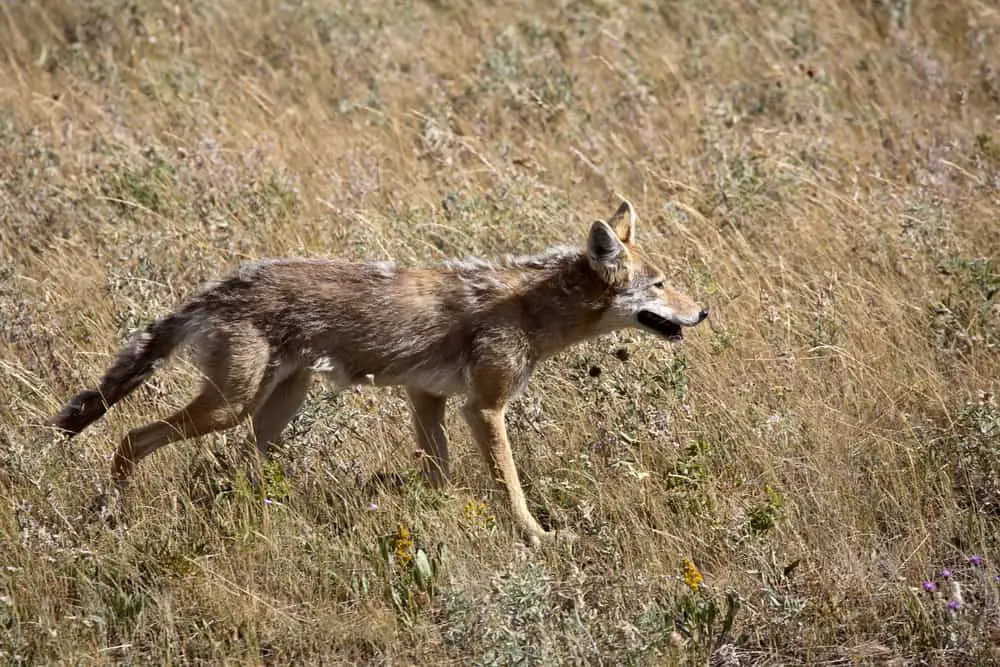
Plains coyote is the biggest of the four and has a pretty expansive range. In Canada, it lives in southeastern Alberta, southwestern Manitoba, and southern Saskatchewan.
In the U.S., Plains coyotes live in the northern Panhandle of Texas, northwestern Oklahoma, most of North Dakota, the northeastern part of New Mexico, east of the Rockies in Colorado, Wyoming, and Montana.
Texas Plains Coyote

The Texas Plains coyote has fairly thick fur and small ears. It can be located in most of Texas, eastern New Mexico, and a section of northeastern Mexico.
2 Eastern Coyotes
There are only two species of coyote classified in the Eastern zone. However, they go out of their way to stand out. The Northeastern is known for having the biggest teeth, and the Southeastern coyote is the biggest of the subspecies.
Northeastern Coyote
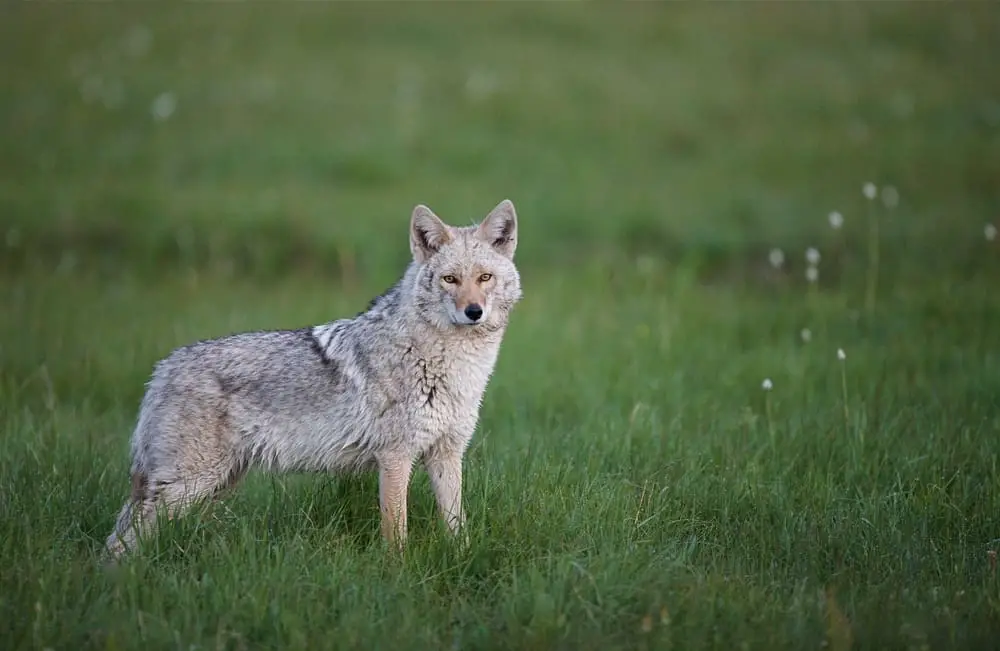
Northeastern coyote takes up significant room. In Canada, it hangs out in Manitoba, southern Ontario, southern Quebec, and north-central Saskatchewan. In the U.S., it is found in northern Indiana, most of Illinois, Wisconsin, Michigan, parts of Missouri, Iowa, Minnesota, and eastern North Dakota.
Southeastern Coyote
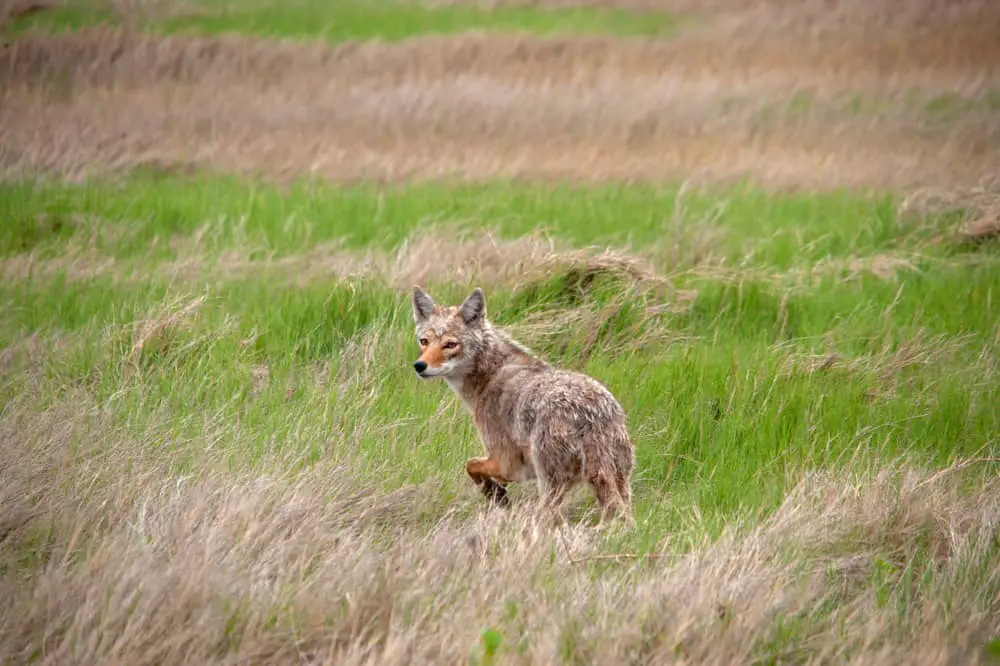
Southeastern coyote is found in Arkansas, Missouri, Texas, Oklahoma, and parts of Kansas.
6 Western Coyotes
The six western coyotes primarily live in the United States, with only the Mountain and Northern venturing into the colder north of Alaska and central Canada. The six subspecies are California Valley, Mountain, Northern, Northwest Coast, Peninsula, and Sand Pedro Martir.
California Valley Coyotes

California Valley coyote is relatively dark, with large ears but small teeth. It hangs out in parts of California.
Mountain Coyotes
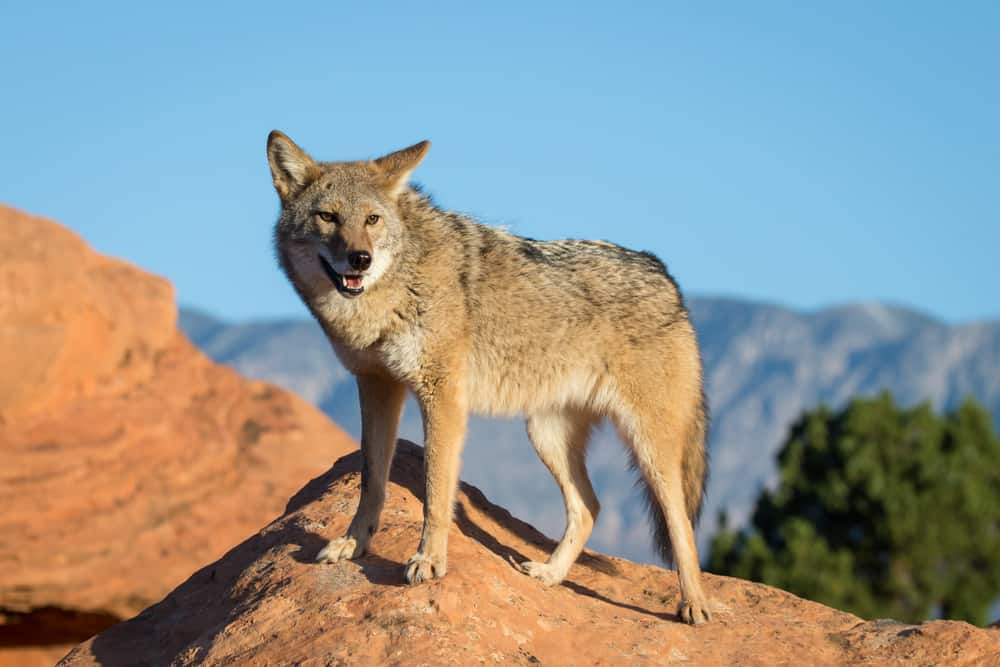
Mountain coyotes are known for their long ears and substantial tail. In Canada, they can be found in southern British Columbia and the southeastern part of Alberta.
In the U.S., the Mountain coyotes are partial to the east of the Cascade Range in Oregon and Washington, parts of northern California, Idaho, western Montana, most of Colorado, Wyoming, and parts of Nevada and Utah.
Northern Coyotes
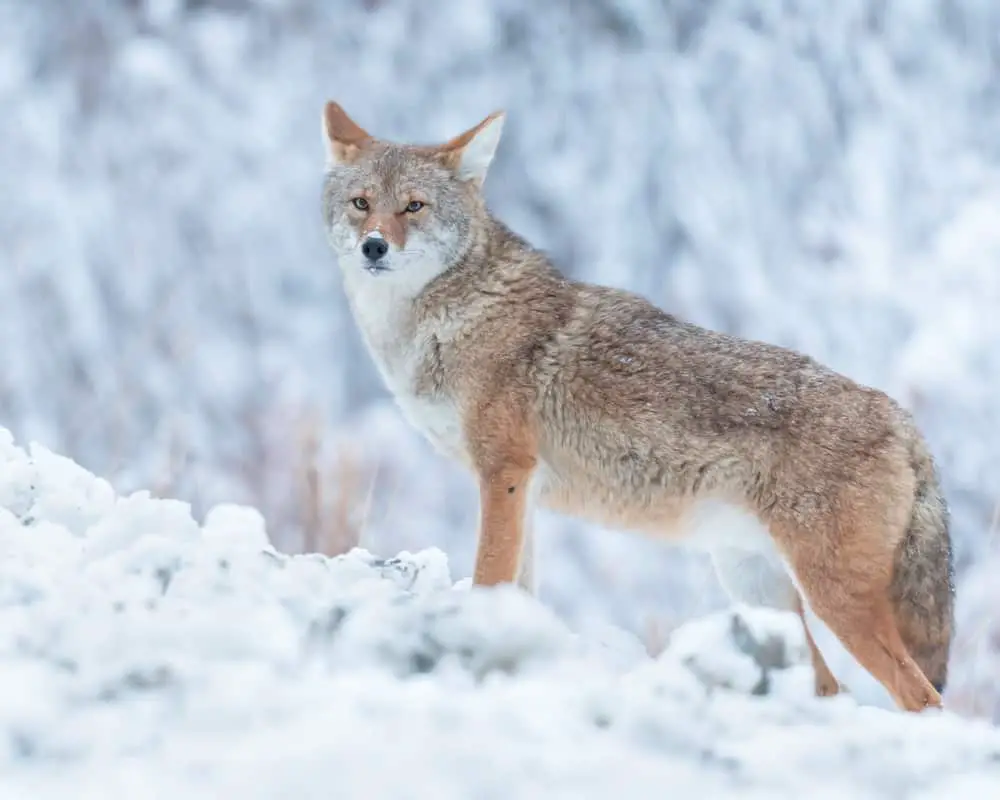
Northern coyotes have fur with a cinnamon color and are primarily found in Alaska and parts of Canada. In Canada, they can be found in the Yukon Territory, Northwest Territories, and the northern regions of British Columbia and Alberta.
Northwest Coast Coyotes

Northwest Coast coyotes are on the smaller side and have darker fur. They are found in the Cascades of Oregon and Washington.
Peninsula Coyote
Peninsula coyote sports reddish fur and occasionally has black on its belly. It hangs out in Baja, California.
San Pedro Martir Coyotes
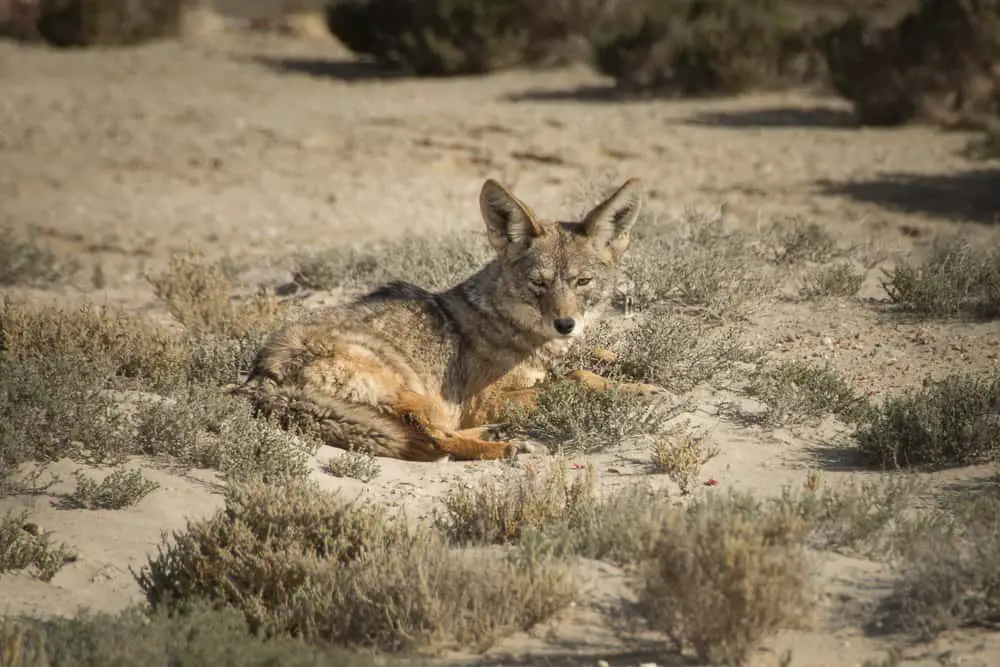
San Pedro Martir coyote is on the small side and has reddish fur. It is found in Baja, California, and Southwest California.
7 Central American Coyotes
The heat doesn’t put coyotes off at all, and there are seven subspecies to prove it, living in Central America. The seven subspecies are: Belize, Colima, Durango, Honduras, Mexican, Salvador, and Tiburón Island.
Belize Coyotes
Belize coyotes are spotted in Mexico, San Vincente, Chiapas, and Guatemala.
Colima Coyotes
Colima coyotes are fairly dark and hang out in the coastal regions of Mexico, Jalisco, and Guerrero.
Durango Coyotes
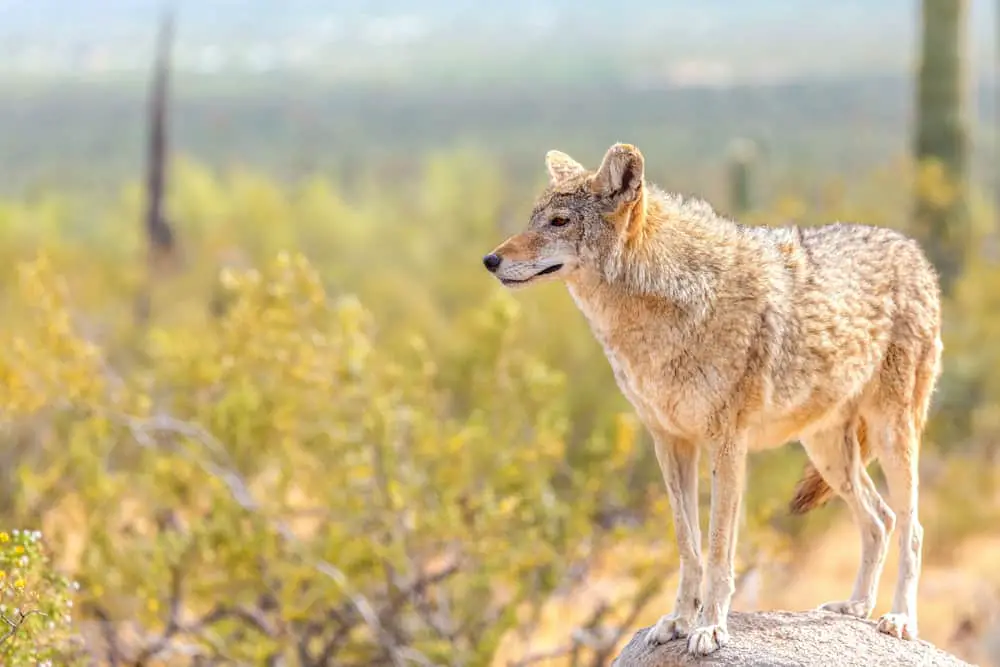
Durango coyotes are sizable and sport a reddish coat. They live in Durango, Chihuahua, Sonora, and Sinaloa.
Honduras Coyotes
Honduras coyotes have thin fur and tend to be small. They are located north of Tegucigalpa.
Mexican Coyotes
Mexican coyotes have formidable teeth and a reddish coat. They live in Mexico and are found in Oaxaca, Puebla, and Veracruz.
Salvador Coyotes
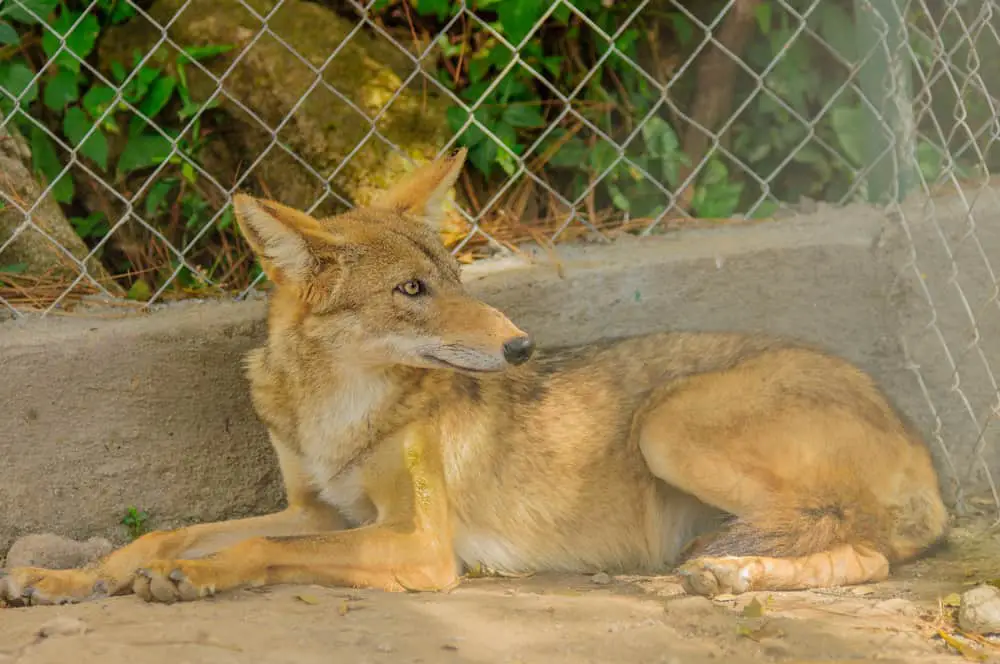
Salvador coyotes are found in southern Panama and Cerro Mogote.
Tiburón Island Coyotes
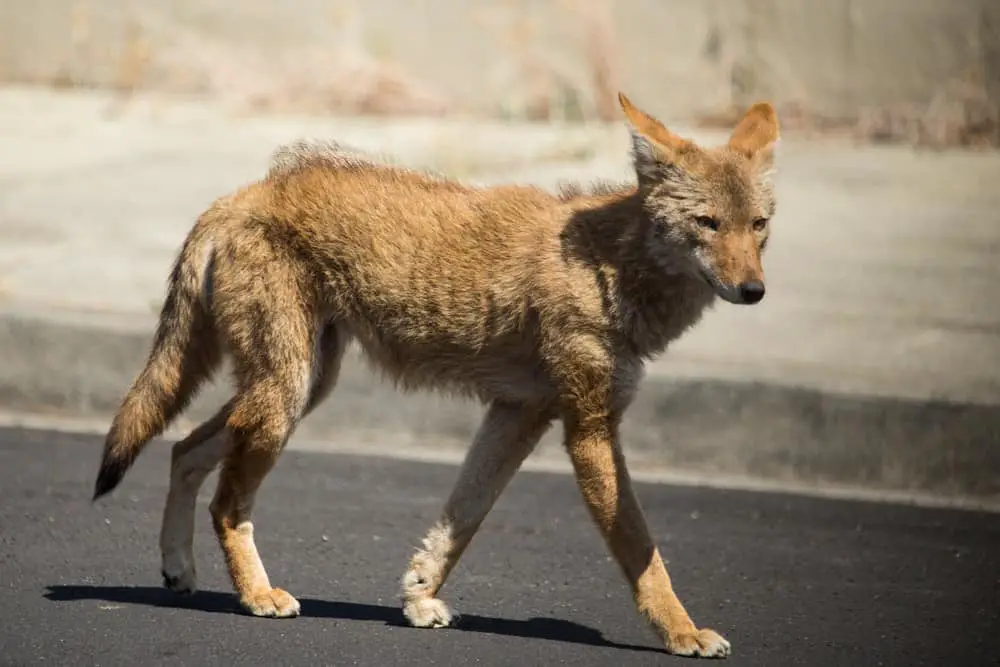
Tiburón Island coyotes live on the Tiburón Island and are relatively pale.
Will Coyotes Eat My Pet?
Those that live in cities are not used to wildlife disrupting their day-to-day routines. There are the pigeons, the rodents, the pets, and that’s about it until the coyotes moved in. Now some pets are at risk.
Of course, it depends on your pet’s size. If you happen to own a wolf or an elephant, your pet will not worry about a coyote. However, if you own a more common pet, such as a dog or a cat, it would be wise not to allow them to roam freely from late afternoon and in the early mornings.
Urban coyotes have adapted to living with humans by trying to avoid them. Thus, they like to hunt in the evenings and early mornings. Unfortunately, that’s when Fluffy is most at risk. However, to put that in perspective, more pets are harmed by other dogs than coyotes.
Tips To Keep Your Pets Safe From Coyotes
- Don’t keep pet food bowls outside.
- Don’t keep pet water bowls outside from dusk to dawn.
- Never feed coyotes.
- Secure your trash and make sure it isn’t kept in an area near where your pet plays.
- Keep pets indoors when you are not at home.
- Coyotes also eat fruits and vegetables (love watermelon), so consider having gardening areas separate from where Fluffy plays.
- Make your home less attractive to coyotes by installing motion detector lights.
On the bright side, coyotes do eat rodents. So, having one in your area might help lower the local rat and mice population. But if you want more information on how to co-exist in peace with your neighborhood coyotes, check out the USDA Wildlife Services’ activity sheet.
Do Coyotes Hurt People?
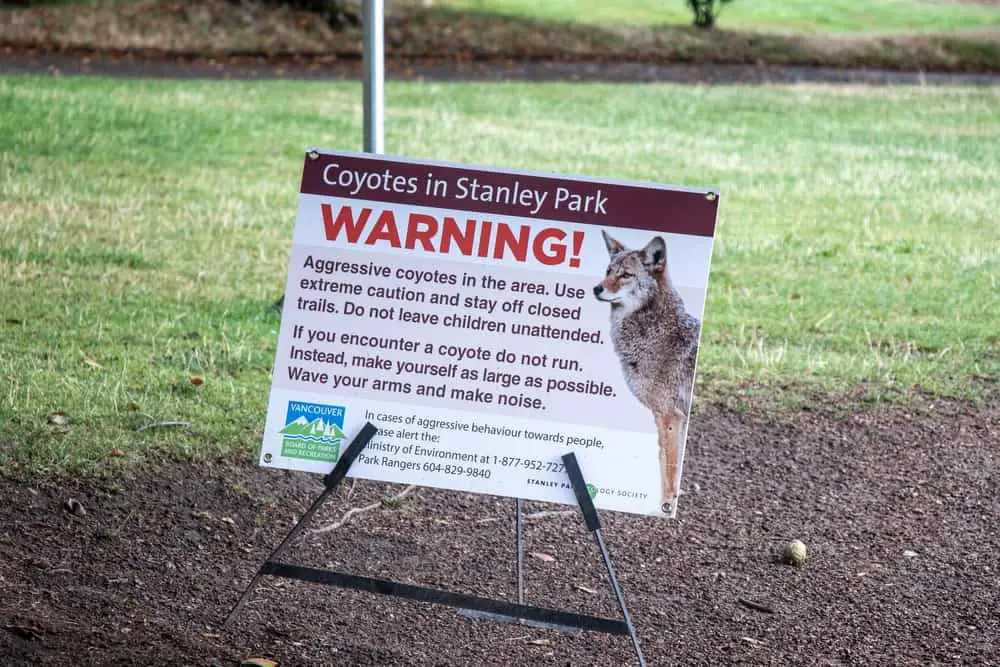
Despite coyotes moving to the cities, they don’t actually want to deal with people. That said, sometimes things go a little bit wrong, and a coyote feels it needs to defend itself. In a span of 38 years (1977-2015), there were 348 victims of a coyote attack.
Of that 348, there were two deaths. Now compare that to dogs, like Fluffy, which kill about thirty humans a year.
People who encounter coyotes while walking their dog or playing in their yard are recommended to use humane hazing techniques. Never, ever, run from a coyote. Prey does that, and it will be instinctual for the coyote to give chase.
Examples Of Humane Hazing Techniques For Coyotes
- Make yourself big and loud. Raise your arms, open your jacket, find your voice (or whistle). (Same thing if you see a cougar while hiking.) Don’t turn your back until the coyote is gone. They are curious and may start to leave, only to stop and take another look.
- Carry a squirt gun when walking your dog and use it as a deterrent.
- Carry a whistle or air horn when walking your dog.
- If in your yard, use your hose to spray water.
- If at home or camping, banging pots and pans is a good deterrent.
Do Coyotes Have Predators?

Humans are the biggest predator of coyotes. More accurately, cars are the most common killer of urban coyotes. Estimates range from 40-70 percent of urban coyotes’ death are due to being run over.
Historically, the natural predators of coyotes were wolves and cougars. They also were coyotes’ biggest competitor when it came to establishing territories too. But with wolves and cougar numbers down, the coyote has become king.
Black bears and grizzlies have occasionally taken out coyotes, but with these animals’ habitats so restricted, it is easy for coyotes to stay out of their way. While golden eagles have also been known to take out young coyotes from time to time, their numbers are so small it is hardly a concern for a modern coyote. Again, cars are now their biggest enemy.
Do People Hunt Coyotes?
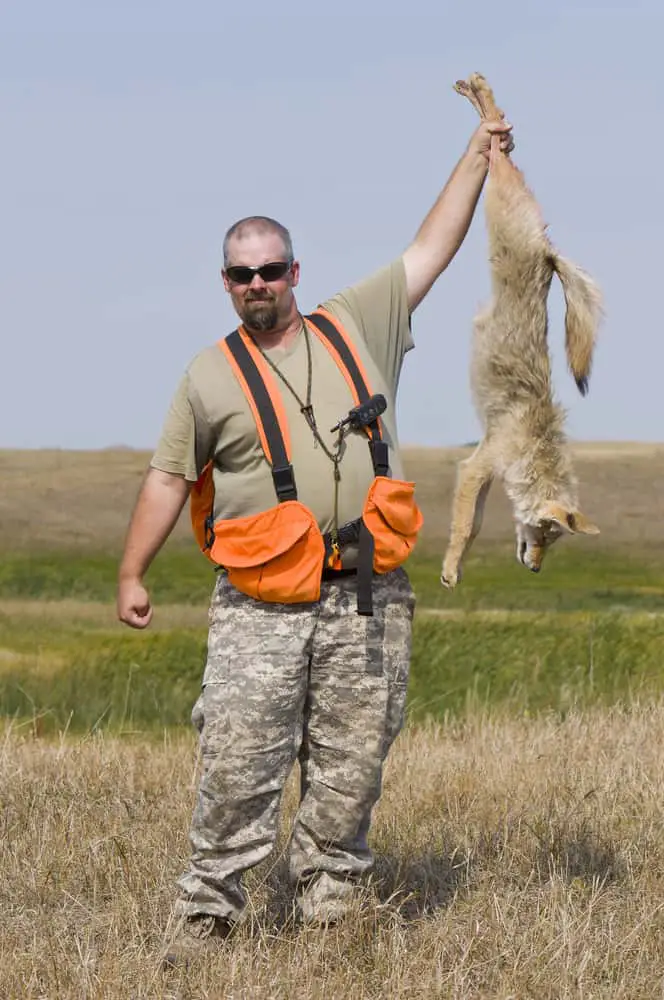
Yes, people do hunt coyotes. One of the motivations is to provide local wildlife species a chance to regain their numbers, but it is only a temporary reprieve.
Hunters are motivated to reduce coyote numbers in the belief that coyotes are taking out the wild game. Hunters want to hunt the game, so they hunt the coyotes first. There are official coyote hunts with cash prizes.
However, those that study coyotes say these measures tend to exacerbate the problem. Not only do female coyotes come into sexual maturity earlier after a cull, but they start having larger litters.
What Good Are Coyotes?
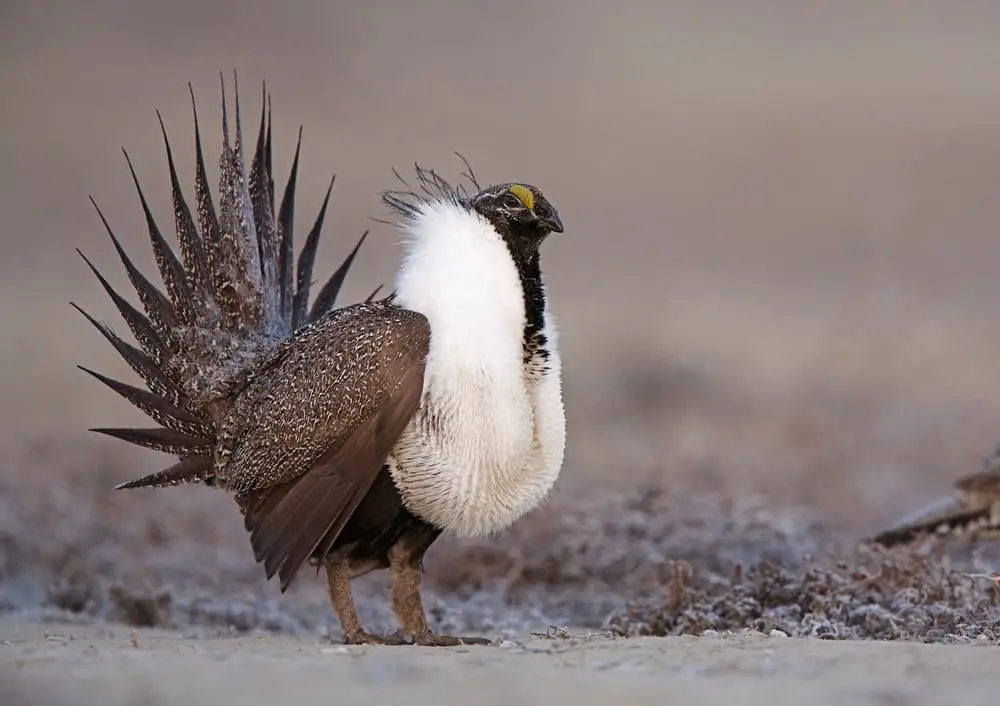
Coyotes do have a purpose other than terrorizing unsecured trash bins across the North and Central American continent. For example, they help keep populations of rodents, rabbits, foxes, and raccoons from growing out of control. Animals such as the sage grouse benefit from coyotes, who eat predators of the sage grouse.
15 Coyote Fun Facts
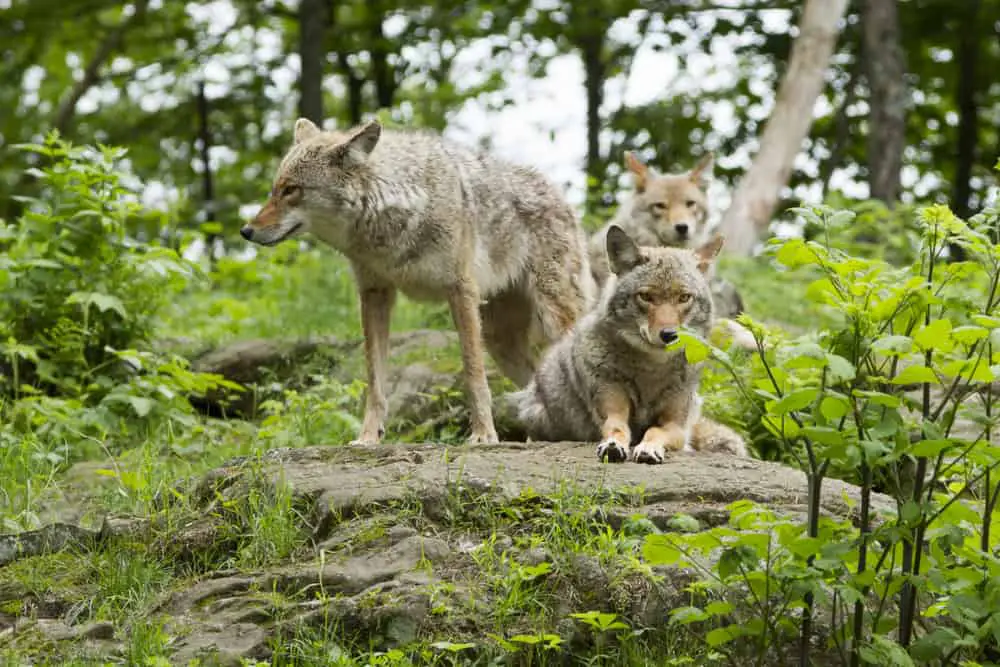
- Coyotes’ Latin name is Canis latrans, which essentially means “barking dog.”
- Coyotes walk on their toes, making them “digitigrades.”
- Coyotes can reach up to 40 mph.
- Coyote pups are born with their eyes shut. They remain that way for 10-12 days.
- Coyotes have no problem with swimming.
- Coyotes have eleven distinct different sounds that they use to communicate with the rest of their pack.
- Coyotes are firm believers in co-parenting.
- Coyotes are champion jumpers. While they can only leap about four feet up, they can push off a vertical surface to extend this. Thus, even an eight-foot fence might be no match for a determined coyote.
- Coyotes and badgers will team up to hunt prairie dogs and ground squirrels. Both animals increase their hunting success when they partner up.
- Crows will often follow coyotes around. As scavengers, crows are hoping for scraps coyotes leave behind.
- Sometimes coyote parents will give some of their territory to one of their young that can’t find a new one. This is called “budding.”
- Pups leave their parents within nine months of being born.
- The average lifespan for a coyote in the wild is 5-6 years and is almost double that in captivity.
- Coyotes have a home range and a territory. The home range is the distance it will wander from its den. The territory is closer to the den, and defended from other coyotes, and is marked with urine and scat. Like humans, the boundaries of these areas are often made up of significant visible markers such as streams or roads.
- Coyotes differ in size, depending on their subspecies. Thus, their weight range is 20 – 50 pounds (9 – 23 kg), and they are between 32 – 37 inches long (81 – 94 cm), not counting their tail.
Sources:
Live Science: Coyotes
Britannica: Coyotes
National Geographic: Coyotes have expanded their range to 49 states
Integrated Taxonomic Information System: Canis latrans
Coyote Smarts: Coyotes 101
U.S. Forest Services: Canis latrans
Canid Biology and Conservation: Northeastern Coyote Taxonomy and Admixture
